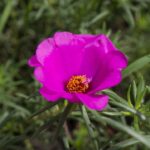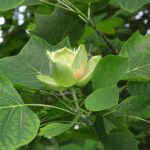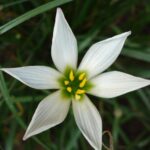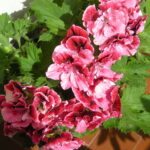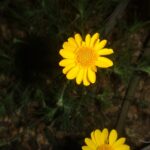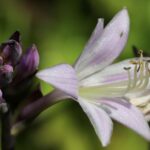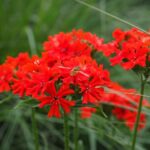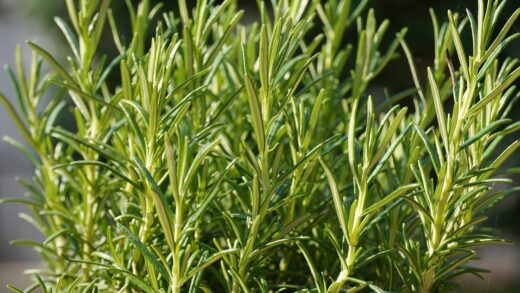The diseases and pests of the Abyssinian gladiolus

While the Abyssinian gladiolus is a relatively resilient and trouble-free plant, it is not entirely immune to the challenges posed by various diseases and pests. A vigilant gardener who can recognize the early signs of a problem is better equipped to intervene effectively, preventing minor issues from escalating into major threats that could compromise the health and beauty of the plants. The most significant problems are often related to fungal diseases, which thrive in damp, cool conditions and can lead to the rot of the corm, the plant’s essential life-support system. Pests, while generally less common, can also make an appearance, with certain insects posing a threat to both the foliage and the flowers. Proactive management, which includes proper cultural practices such as ensuring good air circulation, correct watering, and maintaining garden hygiene, is the most effective strategy. By understanding the specific diseases and pests that can affect Gladiolus murielae, you can take targeted steps to protect your plants and ensure they remain a healthy and stunning feature in your late-summer garden.
Fungal diseases and corm rot
By far the most common and serious threat to the Abyssinian gladiolus is fungal disease, particularly those that lead to corm rot. Pathogens such as Fusarium, Botrytis, and Stromatinia can infect the corms, causing them to decay and rendering them unable to support the plant. These diseases thrive in poorly drained, waterlogged soils and can be exacerbated by cool, damp weather conditions. The initial infection often occurs in the garden, but the rot can continue to develop and spread during the winter storage period if conditions are not optimal.
The symptoms of corm rot can manifest in several ways. During the growing season, an infected plant may appear stunted, with yellowing leaves and a failure to thrive or produce flowers. In advanced cases, the base of the stem may become soft and the entire plant can wilt and collapse. When you lift the corms in the autumn, an infected corm will feel soft and spongy, may have dark, sunken lesions, and might emit a foul odor. A healthy corm, in contrast, should be firm and solid to the touch.
Prevention is the most effective strategy for managing fungal diseases. This begins with planting only healthy, disease-free corms purchased from a reputable supplier. Before planting, carefully inspect each corm for any signs of softness, discoloration, or mold. The single most important cultural practice is to ensure the planting site has excellent drainage. Amending heavy soils with organic matter and grit is crucial. Avoid overwatering, as constantly saturated soil creates the perfect environment for fungal pathogens to multiply and attack the corms.
Proper handling and storage of the corms during winter are also critical. After lifting them in the autumn, they must be cured in a warm, dry, well-ventilated area for two to three weeks. This process hardens the outer skin and heals any minor wounds, creating a protective barrier against fungal spores. Store the cured corms in a cool, dry, and dark place with good air circulation, such as in mesh bags or trays. Never store them in plastic bags, as this traps moisture and creates an ideal breeding ground for rot.
More articles on this topic
Common insect pests
The Abyssinian gladiolus is not a primary target for many insect pests, but there are a few that can occasionally cause problems. One of the most significant is the gladiolus thrips. These are tiny, slender insects that are very difficult to see with the naked eye. They feed by sucking the sap from the leaves and flowers, causing a characteristic silvering or streaking on the foliage. In severe infestations, the flower buds may be deformed or fail to open properly, and the petals can be streaked with brown.
Aphids are another common sap-sucking pest that can sometimes colonize the tender new growth and flower buds of the Abyssinian gladiolus. They feed in clusters and can cause distortion of the leaves and flowers. As they feed, aphids excrete a sticky substance called honeydew, which can lead to the growth of sooty mold, a black fungus that, while not directly harmful, is unsightly and can block light from the leaves. Aphids are relatively easy to spot and can be managed if caught early.
Slugs and snails can also be a nuisance, particularly in damp conditions and with young, emerging shoots. They feed at night, chewing ragged holes in the leaves and sometimes damaging the delicate flower petals. Their presence is often given away by the silvery slime trails they leave behind. While they are unlikely to kill a mature plant, they can cause significant cosmetic damage, detracting from the plant’s elegant appearance, and can be particularly destructive to young seedlings or newly planted cormels.
Spider mites, which thrive in hot, dry conditions, can also occasionally affect Abyssinian gladiolus. These tiny arachnids are difficult to see, but their presence is often indicated by a fine webbing on the undersides of the leaves and a stippled, yellowed appearance of the foliage. Like thrips and aphids, they feed by sucking the cell contents from the leaves, which can reduce the plant’s vigor if the infestation becomes severe. Regular inspection of your plants is key to spotting these pests early.
More articles on this topic
Pest and disease management strategies
An integrated pest management (IPM) approach is the most sustainable and effective way to deal with pests and diseases affecting your Abyssinian gladiolus. This strategy prioritizes preventative and cultural controls, resorting to chemical treatments only when necessary. Good garden hygiene is a cornerstone of IPM. This includes removing and destroying any diseased plant material promptly, keeping the area around the plants free from weeds that can harbor pests, and rotating the planting location of your gladioli every few years to prevent the buildup of soil-borne pathogens.
For insect pests like aphids and spider mites, often the first line of defense is a strong jet of water from a hose, which can physically dislodge them from the plant. This is often sufficient to control minor infestations. For more persistent problems, insecticidal soap or horticultural oil sprays can be very effective. These products work by suffocating the soft-bodied insects and have a low impact on beneficial insects like ladybugs and lacewings, which are natural predators of many garden pests. Always spray in the evening or on a cloudy day to avoid scorching the leaves.
Managing gladiolus thrips can be more challenging. Since they often hide deep within the leaf sheaths and flower buds, they can be difficult to reach with sprays. Good autumn cleanup is crucial, as thrips can overwinter on plant debris and corms. At the end of the season, remove and destroy all old foliage and flower stalks. Some gardeners recommend soaking the corms in a hot water bath (around 46°C or 115°F for 30 minutes) before storage to kill any overwintering thrips, but this must be done carefully to avoid damaging the corms.
For slugs and snails, there are several control methods. Hand-picking them at night with a flashlight is a direct and effective, if labor-intensive, method. Creating barriers with crushed eggshells, diatomaceous earth, or copper tape around the planting area can deter them. Beer traps, which are shallow containers filled with beer and sunk into the soil, are also a popular and effective way to trap and drown these pests. Choosing the right control method depends on the severity of the problem and your personal gardening philosophy.
Recognizing nutrient deficiencies
Sometimes, what appears to be a disease may actually be a symptom of a nutrient deficiency. Understanding the visual cues can help you diagnose and correct the problem, restoring your plant to full health. A general yellowing of the older, lower leaves, for example, is often a classic sign of a nitrogen deficiency. If left unaddressed, this yellowing can progress up the plant, and overall growth may be stunted. This can be corrected by applying a balanced liquid fertilizer that contains a good source of nitrogen.
A phosphorus deficiency can manifest in different ways. The plant’s growth may be weak and stunted, and the leaves might take on a dark, almost purplish tinge. Crucially, a lack of phosphorus will often result in poor or non-existent flowering, as this nutrient is vital for bud formation. If your plants are producing healthy foliage but no flowers, a phosphorus deficiency could be the culprit. Amending the soil with bone meal or a high-phosphorus fertilizer can help to remedy this situation.
Potassium deficiency often shows up as a yellowing or browning along the edges and tips of the leaves, particularly the older ones. The plant may also have weak stems and a reduced resistance to disease and drought stress. Since potassium is important for overall plant vigor, a deficiency can leave the Abyssinian gladiolus more susceptible to the very fungal diseases we try to prevent. Fertilizers derived from seaweed or specific potash supplements can correct a lack of potassium.
It is important to distinguish these symptoms from other problems. For instance, yellowing leaves can also be a sign of overwatering and root rot, not just a nitrogen deficiency. Therefore, it’s crucial to consider the overall growing conditions. Is the soil constantly wet? Have you fertilized at all? A holistic assessment is necessary for an accurate diagnosis. Conducting a soil test every few years is the most reliable way to understand the nutrient profile of your garden and address any specific deficiencies proactively.
Preventing problems during storage
The winter storage period is a critical time when Abyssinian gladiolus corms are particularly vulnerable to diseases. The primary goal is to keep the corms in a state of dormancy, safe from both rot and excessive dehydration. The success of this period begins with the harvest. Only store corms that are healthy, firm, and completely free from any signs of disease, nicks, or bruises. Damaged corms are much more susceptible to infection, so it is better to discard any that are questionable.
The curing process is arguably the most important step in preventing storage rot. Spreading the corms out in a single layer in a warm, dry, and airy location for two to three weeks allows their outer skin to dry and harden. This creates a natural protective barrier. It also allows any cuts or scrapes sustained during lifting to heal over, sealing off potential entry points for fungal spores. Do not skip or rush this crucial step, as it significantly increases the chances of successful storage.
The storage environment itself must be carefully controlled. The ideal conditions are cool, dark, and dry, with a constant temperature somewhere between 4-10°C (40-50°F). A frost-free garage, shed, or unheated basement often works well. Good air circulation is vital to prevent moisture from building up around the corms. Storing them in mesh bags, old nylon stockings, or open paper bags is an excellent way to ensure air can move freely around them. Packing them in trays with a dry medium like vermiculite or sand can also work well.
Periodically, perhaps once a month, it is a good practice to check on your stored corms. Gently inspect them for any signs of developing mold or rot. If you find a corm that has started to go soft or show signs of disease, remove and discard it immediately to prevent the problem from spreading to the other healthy corms. By providing the correct storage conditions and being vigilant, you can ensure that your corms remain healthy and viable, ready to be replanted in the spring for another season of beautiful blooms.
📷 Flickr / Szerző: Stefano / Licence: CC BY-NC-SA 2.0





